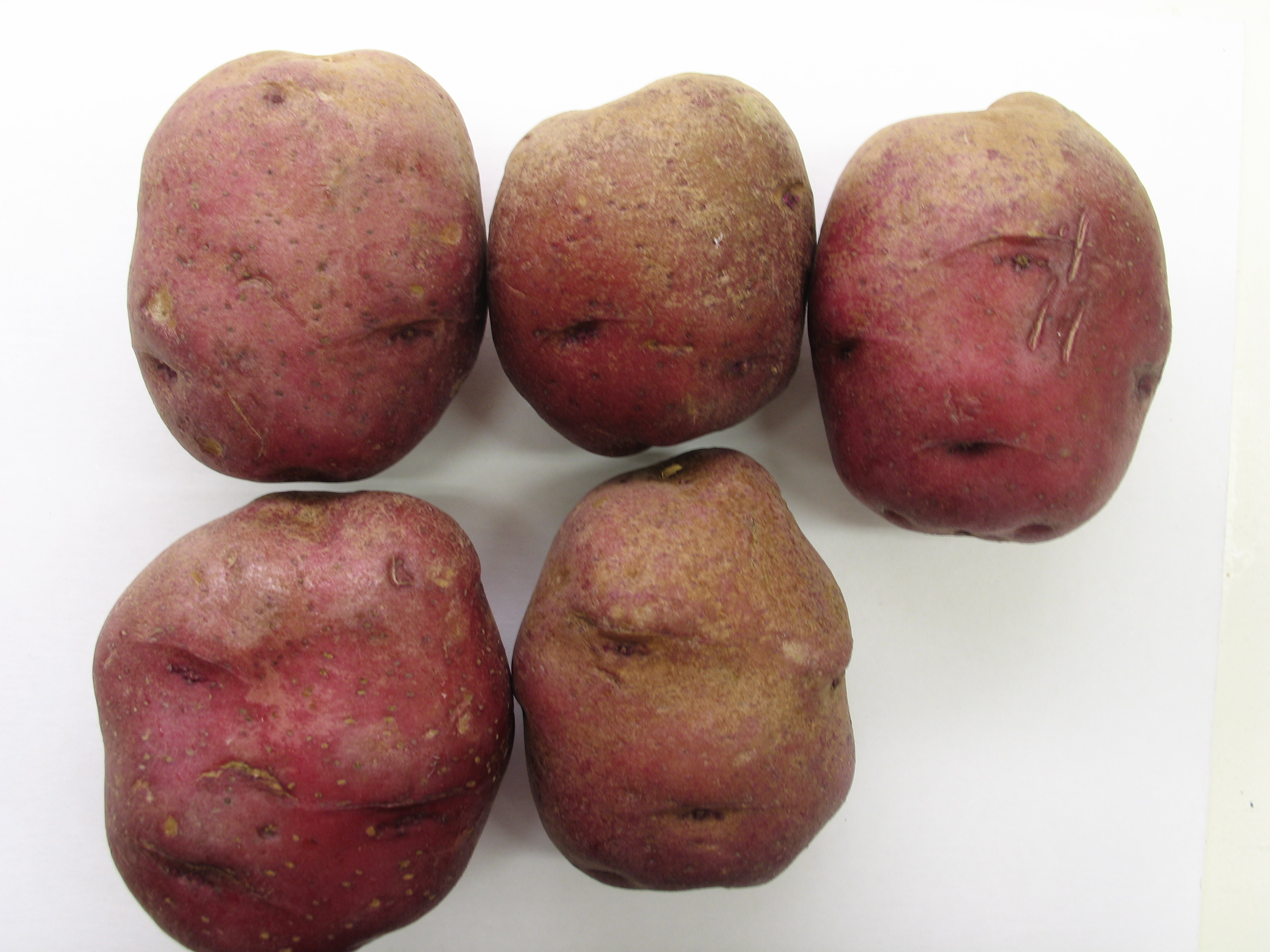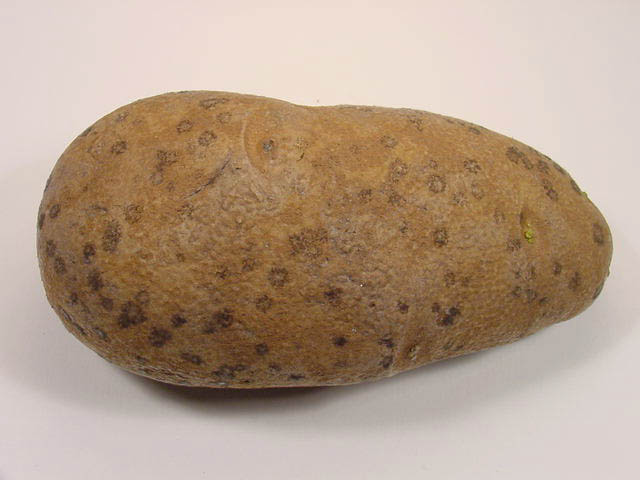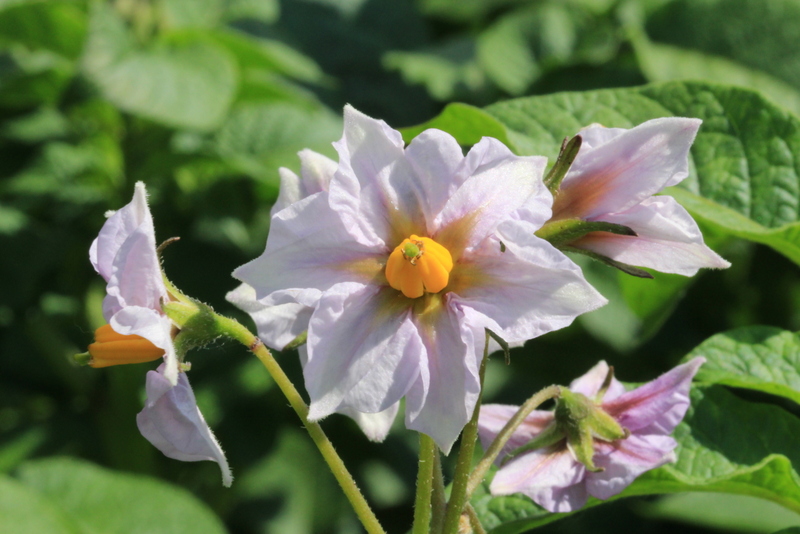When Selecting Seed, Consider Silver Scurf
Selection of potato seed is one of the first steps to a successful potato production to maximize yield potential. Identifying and purchasing high-quality seed will encourage vigorous growth and healthy plants. There are a variety of seed tuber diseases to watch for when choosing seed. Those may include bacterial ring rot, black dot, common scab, early blight, Fusarium dry rot, late blight, nematodes, powdery scab, black scurf, silver scurf, soft rot and blackleg, Verticillium wilt, and virus disease.
A skin blemish problem that causes concern is silver scurf. This is a seed-borne disease and spreads extensively in storage. It can cause tan or grey lesions on tuber periderm, and will cluster near the stolon end of the tuber at harvest (Figure 1). Reinfection in storage results in distinct circular spots over all the surface of the tuber (Figure 2-3). When tubers are moist or wet, silver scurf’s appearance is silvery. The margins of the young lesions are often black and sooty. It is a major problem of tablestock varieties because it reduces the natural color. Silver scurf may also cause stored potatoes to have excessive shrinking because of water loss.
If a seed lot is suspected to have silver scurf the disease, tubers can be sent to a laboratory to confirm the presence of the disease. This is done by placing the tubers in a humid chamber for two to three weeks then assessing the tubers under a microscope. Below is more information and management tips on silver scurf:
- Management begins at planting and continues at harvest and in storage, and requires multiple inputs.
- Sanitation of storages by removal of all potato trash and washing with soap and water (including the plenum, fans, air ducts, etc.) applied through a high pressure washer is recommended annually to get rid of spores that remain in storage from one season to the next.
- There are no commercially acceptable varieties with resistance to this disease.
- Practice crop rotation. The fungus only survives one year in the soil. Allow at least two, and preferably three, years between potato crops.
- Because it is seed-borne, use a seed treatment at planting; CruiserMaxx seed treatment plus Quadris in furrow provide the best control. Most isolates are resistant to thiabendazole (TBZ, Mertect); seed treatments with compounds similar to Mertect or Topsin are not effective.
- Fungicide applications during the season do not reduce silver scurf.
- Minimize the time between vine kill and harvest. The longer the potatoes are in the ground after vine death, the more silver scurf there is. The least amount of silver scurf is found when the interval between vine death and harvest is five days.
- Stadium, a newly registered fungicide from Syngenta can be used for post harvest control of silver scurf of commercial potatoes, but it is not registered for seed potatoes. Since most isolates are resistant to Mertect, application of Mertect to potatoes going into storage is not effective.
- Some have found that treatment of the storage atmosphere with activated chlorine dioxide may reduce infection and spread of silver scurf in storage and reduce disease.
- Because this is primarily a seed-borne disease, seed producers can help reduce this disease in the seed by storing early generations of seed separately from late generations to prevent contamination of the early generation seed by spores in storage.
- There are several other fungicides that we hope to test for silver scurf management.

Figure 1. Silver scurf discoloration of stem ends of red-skinned potatoes.
Figure 2. Silver scurf causes circular spots over all the surface of the tuber when in storage in white-skinned potatoes.

Figure 3. Silver scurf causes circular spots over all the surface of the tuber when in storage on russet-skinned potatoes.
Andy Robinson, PhD, Potato Extension Agronomist, NDSU & U of M
Gary Secor, PhD, Plant Pathologist, NDSU





